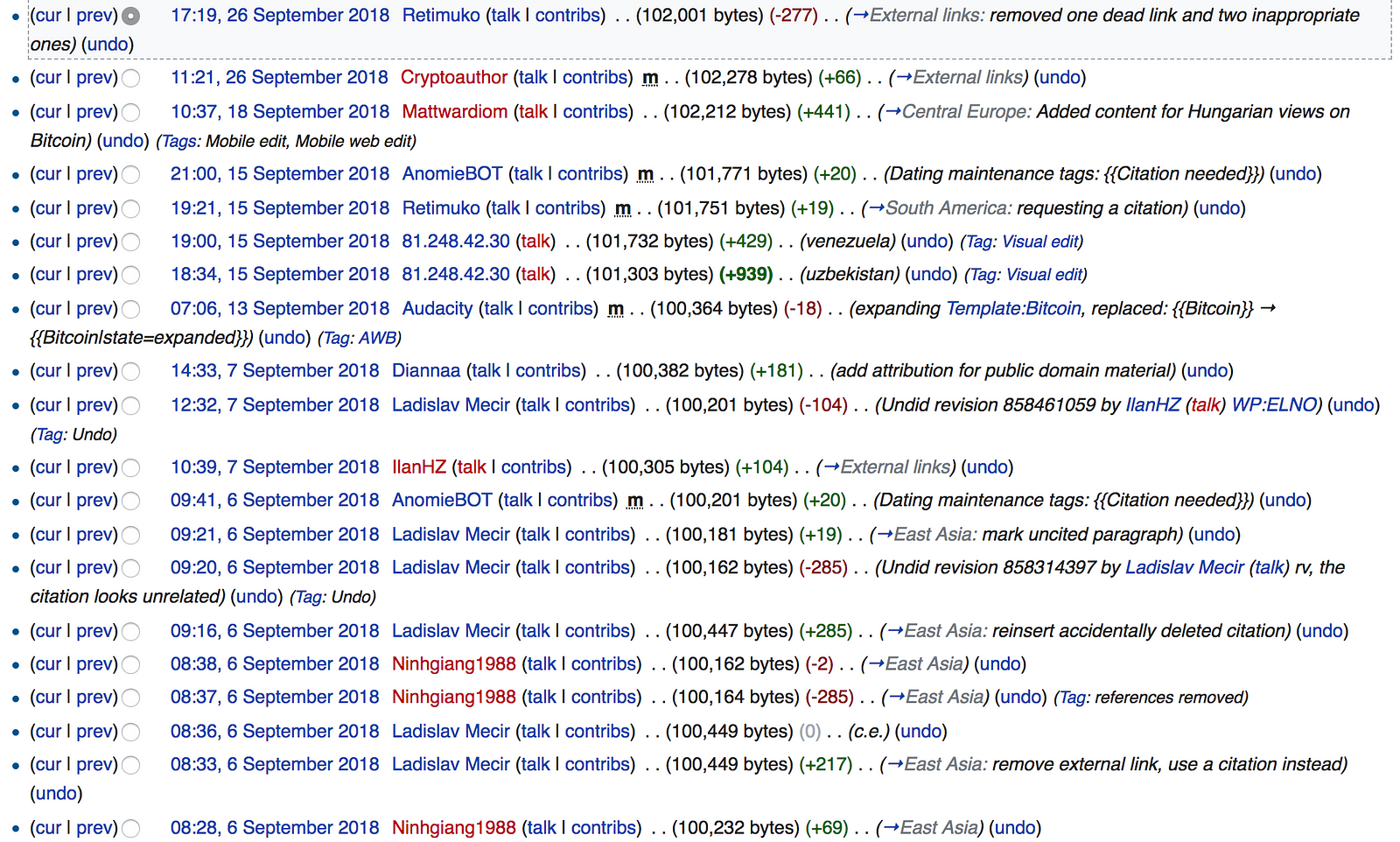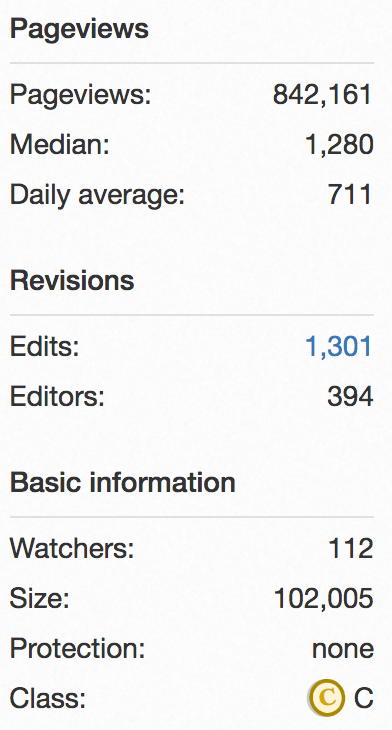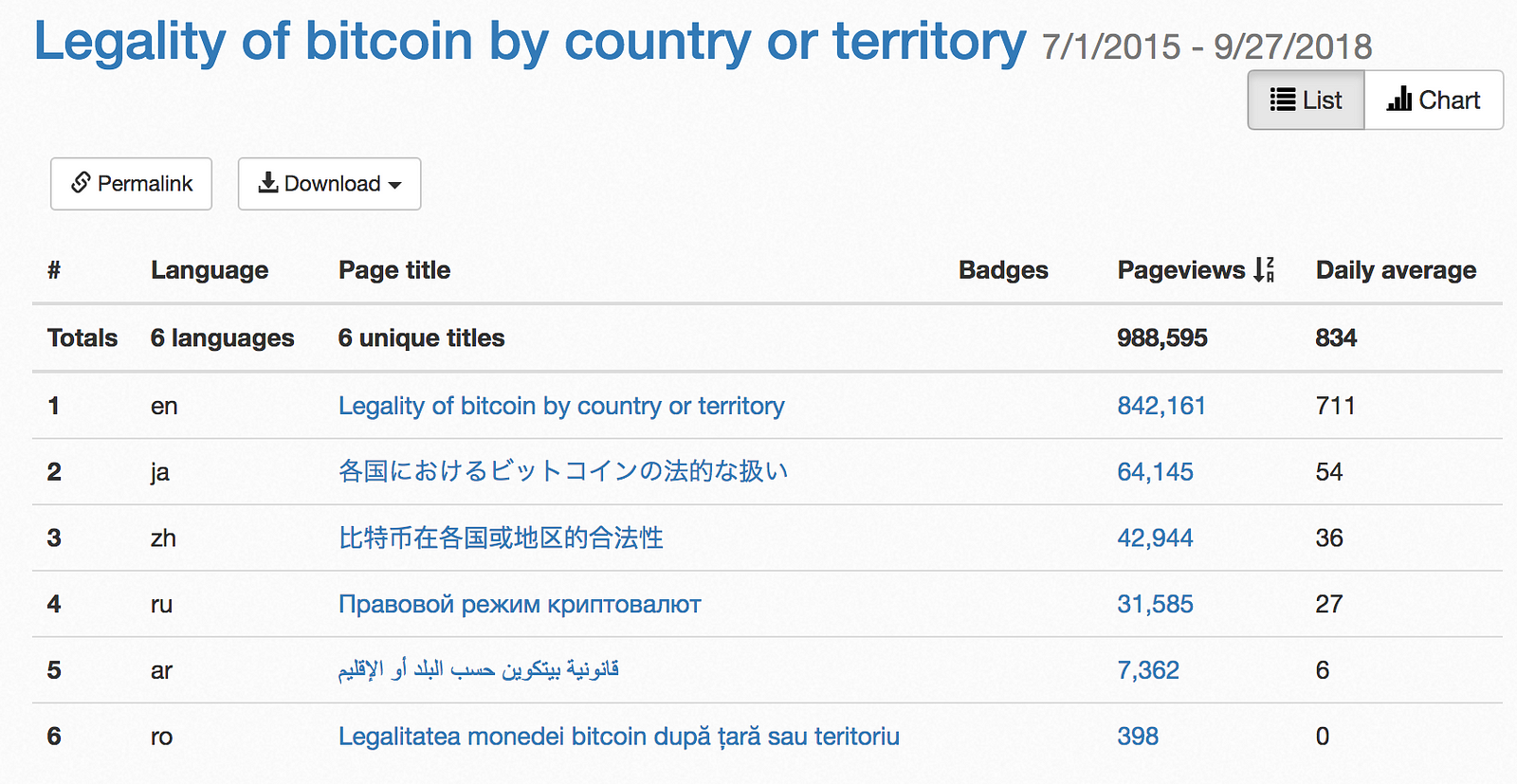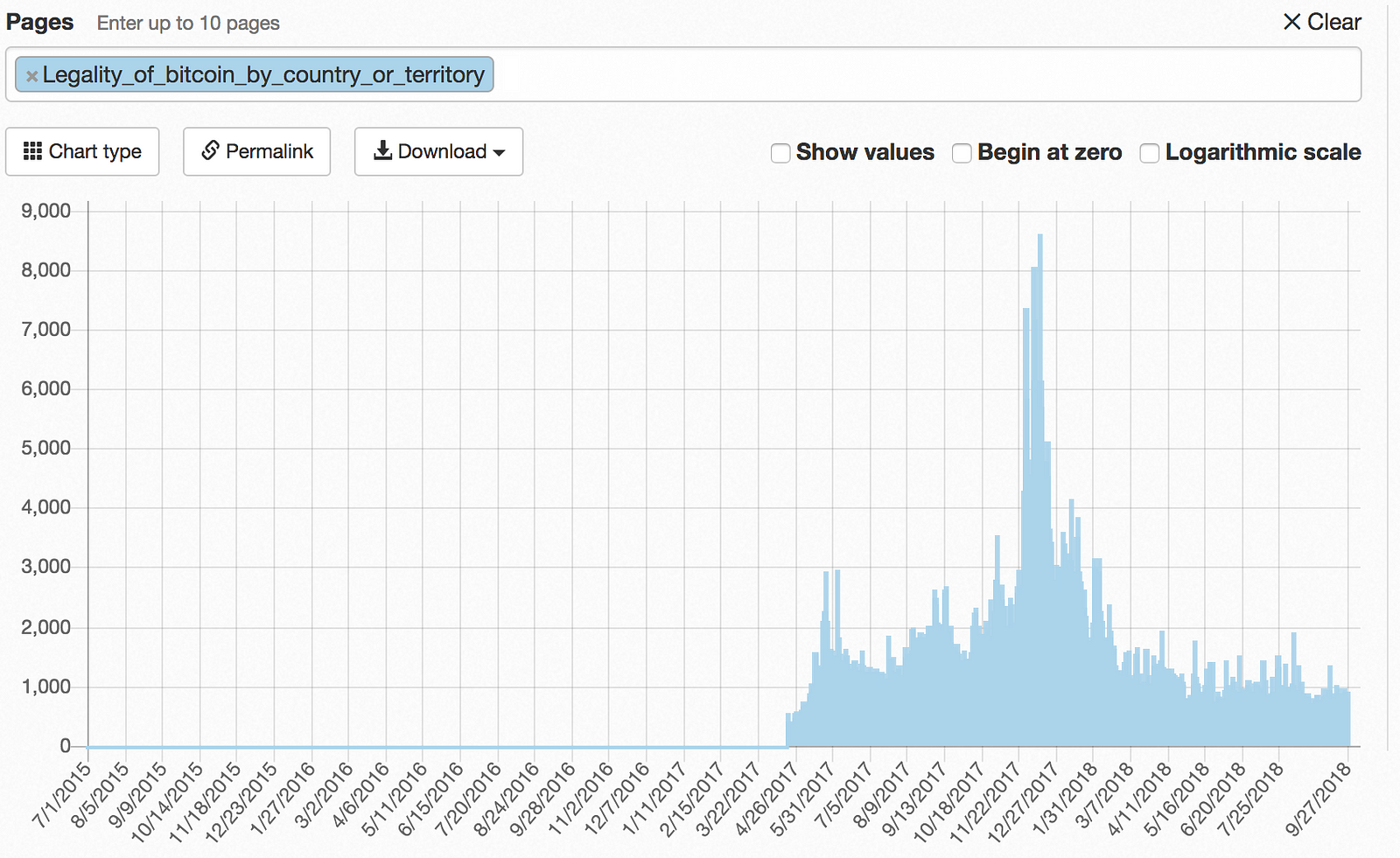State-by-State Legality of Bitcoin
At Crypto Law Review, we’re always trying to get data on how many people are doing CryptoLaw.
As diehard Wikipedians, we know that you can tell a lot about a topic not only from what a particular page says, but also from the pageview statistics and revision history.
So here we go.
Flair Means Undeveloped Field
We’re nearing October and the world’s biggest cryptocurrency (Bitcoin) “legal status” page on the world’s largest knowledge production platform (Wikipedia) shows an update flair dating back to August 2018.


What does this mean?
There’s interest in CryptoLaw, but there’s insufficient supply of CryptoLaw analysis and CryptoLawyers to provide up-to-date legal maps for the crypto community.
Revision History Shows Sustainable Growth
Despite lack of the most up-to-date info (even if it means just removing the flair), the “BitcoinLaw” community seems sufficiently broad to sustain growth.


The article was started in 2014 by David Hedlund. Since then, the pace of revisions shows healthy growth. Here’s a snapshot of the most recent edits.


There are repeat players, which is normal.
Overall, page history shows contributors represent a healthy distribution of experienced Wikipedians, open-source developers, and anons.
The page is not protected, which suggests little vandalism activity, and it has a healthy # of watchers to make reversions, if necessary.
CryptoLaw is Hot
Pageview statistics show close to a million views over a roughly 3 year time span.
That’s a really large number for a topic as relatively obscure as CryptoLaw.


BitcoinLaw = CryptoLaw
Even though the English-language Wikipedia article is nominally focused on Bitcoin, substantively, the analysis applies far more broadly to other crypto instruments as well.
The Russian-language article title captures this well: Правовой режим криптовалют (literal translations: “Cryptocurrency legal regimes”).
English is by far the most dominant dialect of CryptoLegalese, followed by Japanese, and others.
Interest in CryptoLaw Tracks Market
What’s surprising about this bit of analytics isn’t that knowledge interest tracks market interest; that’s to be expected. What’s surprising is that interest in the “legality of Bitcoin” seems to be stabilizing since December 2017 market highs.


There are several different ways to interpret this data.
On the one hand, if we take a long view and compare year-to-year interest, then we conclude that interest in CryptoLaw is booming. The trend lines are positive, etc. etc. etc.
On the other hand, the data may be showing a worrying trend:
Less interest in CryptoLaw may show the emergence of false confidence within the crypto community that crypto’s “legal status” is clear enough to permit us to stop worrying about it.
If the latter thought-process is actually in play, it’s a very bad sign because the list of Crypto’s Biggest Legal Problems is actually vast, and rapidly growing.
Future CryptoLaw Trends
Because the problems keep compounding, what we should see on pageview analytics is a growing interest in CryptoLaw, not stable interest.
We’ll check in every few months with updates, which we’ll add here. Please subscribe to Crypto Law Review & stay tuned.
